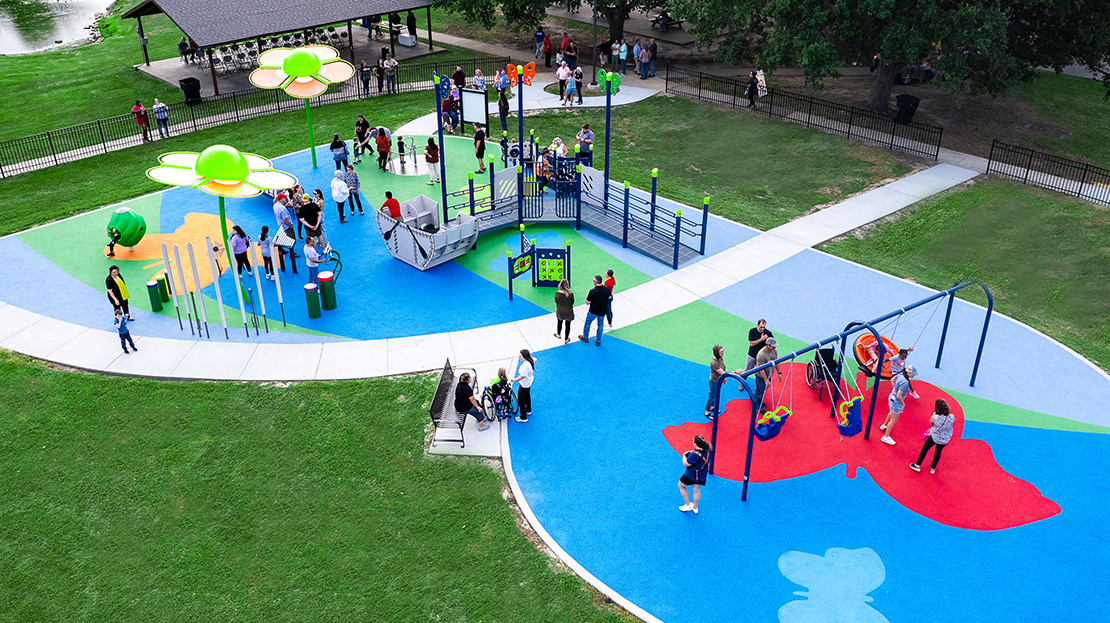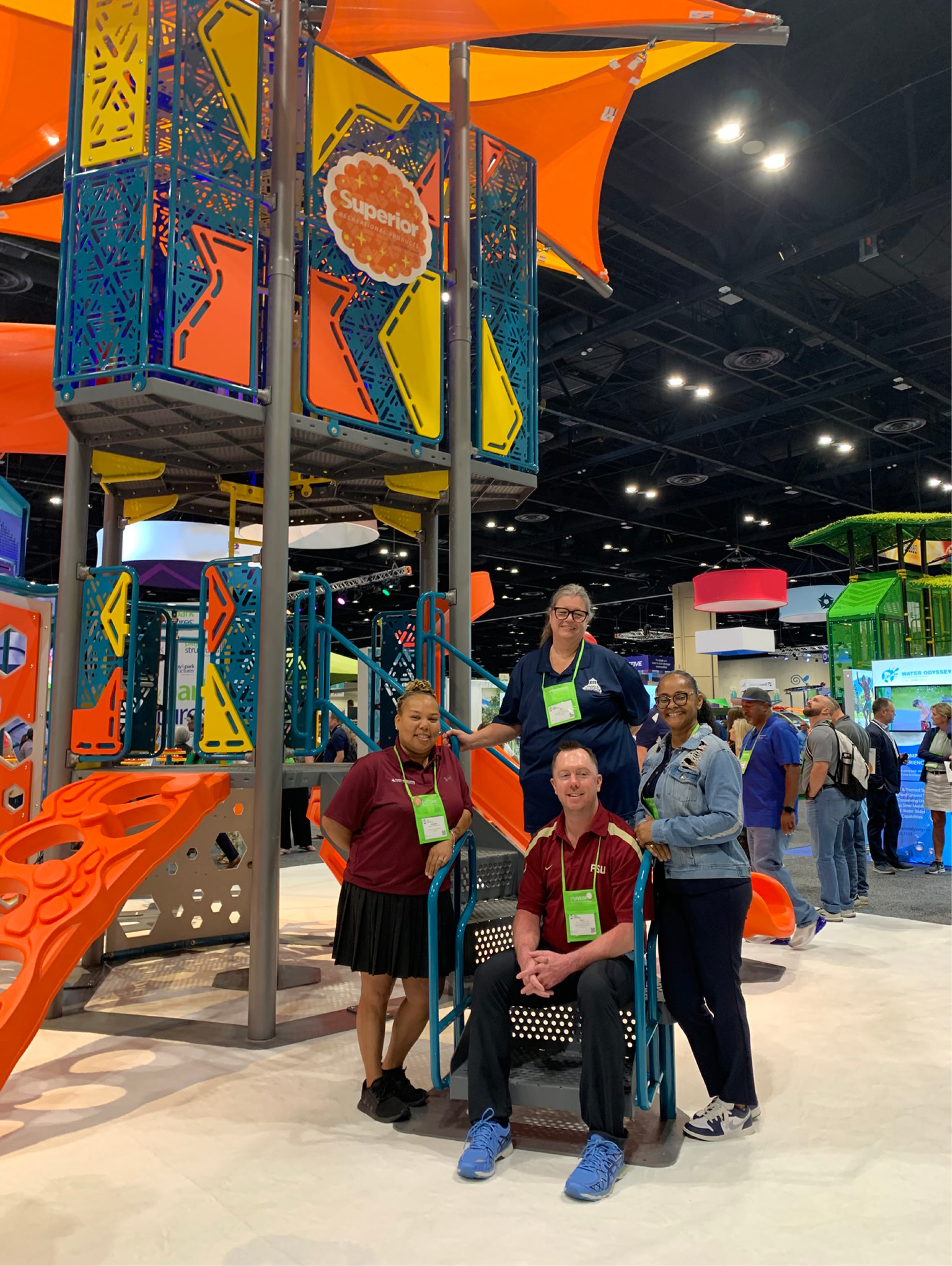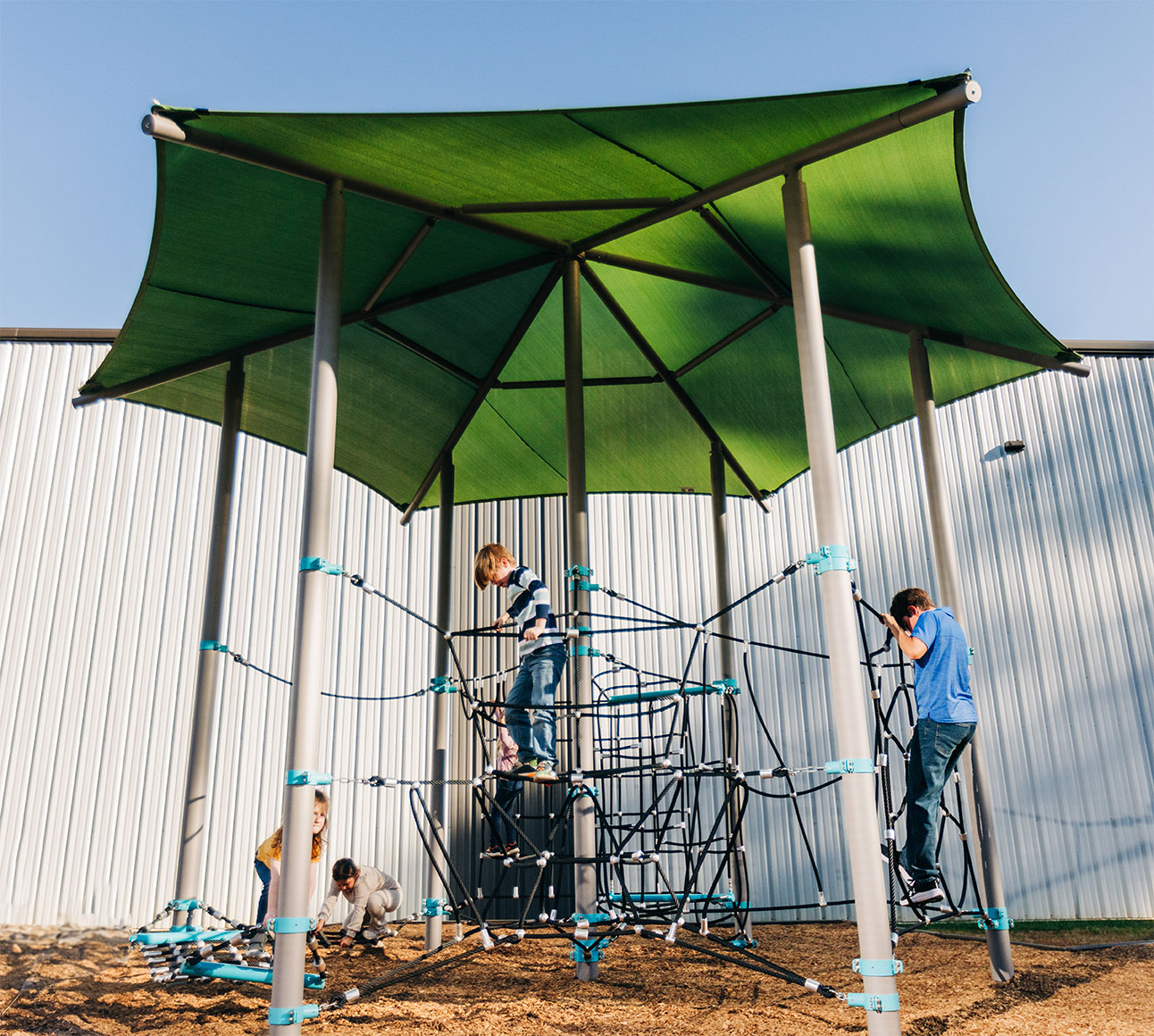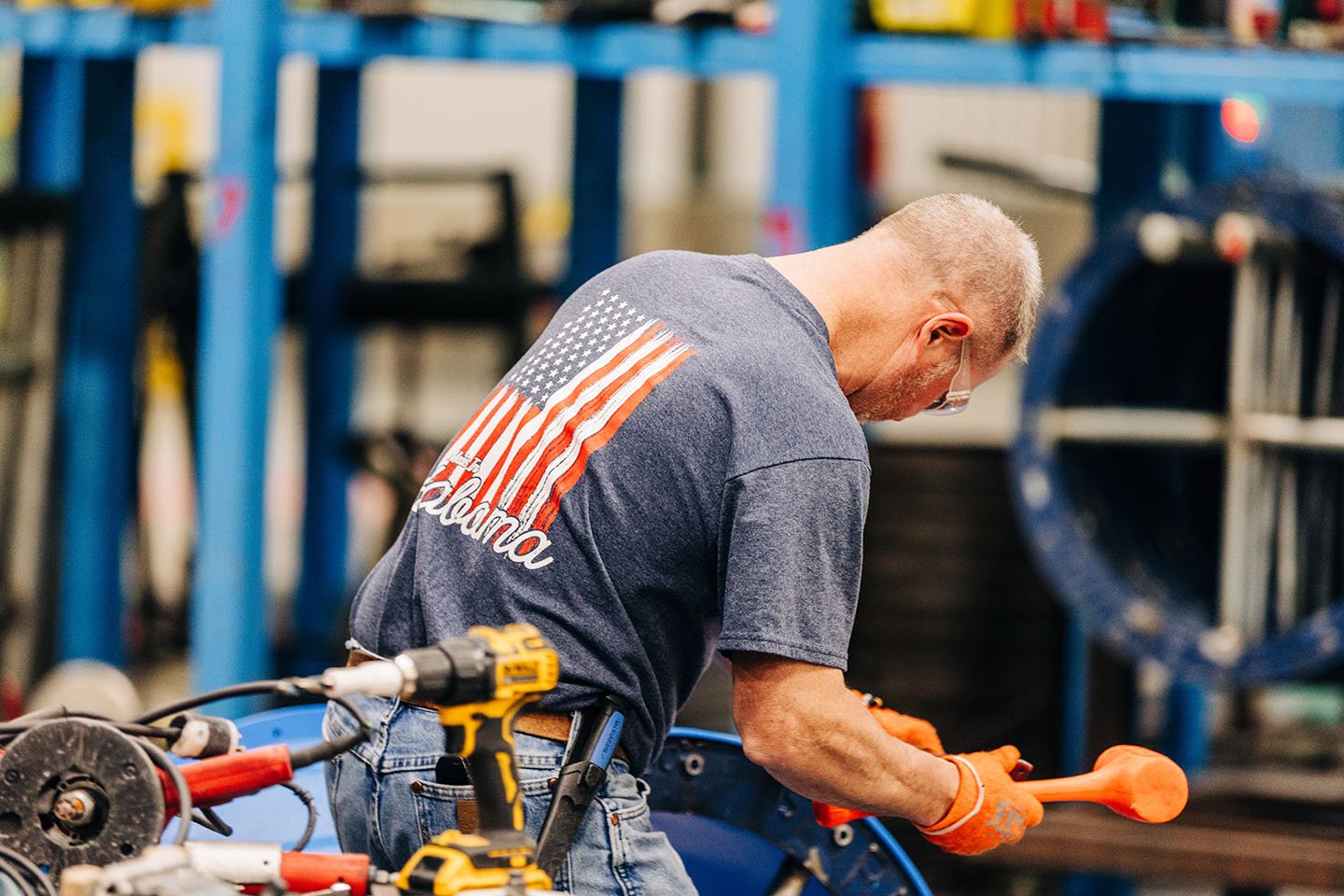Playground design is evolving to create more inclusive, engaging, and sensory-rich environments for children of all abilities.
1. Inclusive Playgrounds
Inclusive playgrounds are becoming a cornerstone of modern playground design. These spaces are thoughtfully crafted to ensure that children of all abilities can play together, fostering social inclusion and mutual understanding. Features such as wheelchair-accessible equipment, sensory play areas, and ground-level activities make these playgrounds welcoming to everyone.
Additionally, inclusive playgrounds often incorporate elements that cater to children with sensory processing disorders, such as quiet zones and tactile panels. The emphasis is on creating a playful environment where no child feels left out, promoting physical, social, and emotional well-being.
2. Nature-Inspired Play Spaces
Nature-inspired playgrounds are gaining traction as they offer a refreshing alternative to traditional play structures. These designs incorporate natural elements like wood, sand, water, and plants, encouraging children to connect with the environment. Such settings not only foster imaginative play but also teach kids about the importance of nature and sustainability.
Moreover, nature-inspired play spaces often include features like climbing rocks, treehouses, and natural water features, providing a variety of physical challenges. This trend aligns with the growing demand for eco-friendly and educational play environments that inspire children to explore and appreciate the natural world.

3. Rope Playgrounds
Rope playgrounds are redefining play environments by introducing new ways for children to climb, balance, and explore. The integration of rope structures offers dynamic challenges that support coordination, strength, and creative movement, making play more engaging for children. Vibrant and visually striking, rope playgrounds invite kids to swing, weave, and navigate complex pathways, fostering both imaginative adventures and essential physical development.
4. Themed Playgrounds
Themed playgrounds are essential for creating immersive and educational play environments. By incorporating specific themes, such as space, dinosaurs, or historical periods, these playgrounds capture children's imaginations and provide unique learning opportunities. Themed playgrounds can complement museums (like in the image below) and educational centers by extending the learning experience beyond traditional settings.
These playgrounds fit seamlessly into various locations, including parks, schools, and community centers, making them versatile additions to any area. Themed play spaces also foster creativity and storytelling, allowing children to engage in role-playing and collaborative play.

5. Sustainable Playground Designs
Sustainability is a growing priority in playground manufacturing. Manufacturers are increasingly using recycled materials and eco-friendly production methods to create durable and safe play equipment. Sustainable playgrounds not only reduce environmental impact but also set a positive example for children about the importance of caring for the planet.
In addition to using green materials, many playgrounds now feature designs that encourage environmental stewardship, such as recycling stations and educational signage about local wildlife. These initiatives help instill a sense of responsibility and environmental awareness in young minds.



